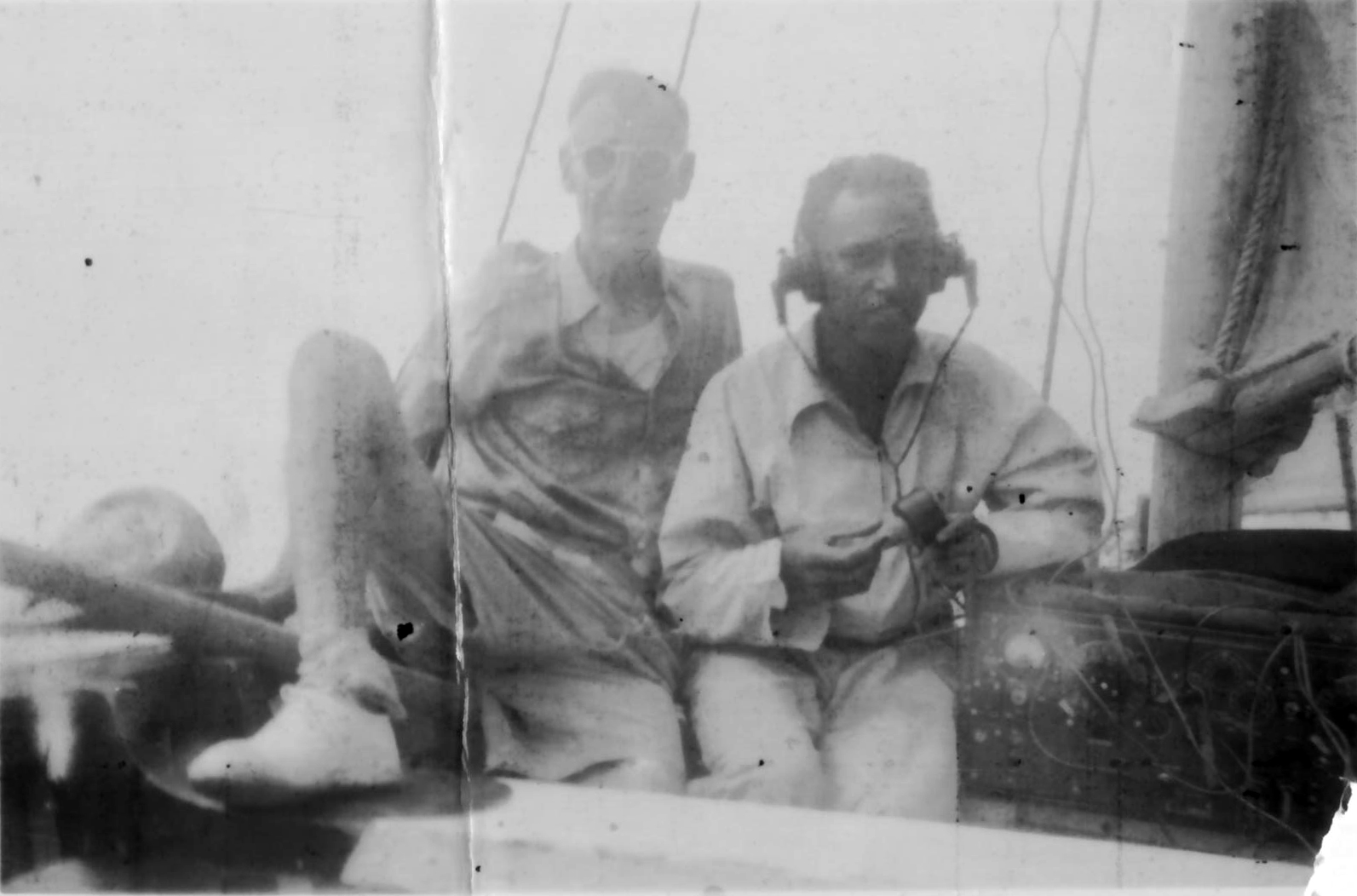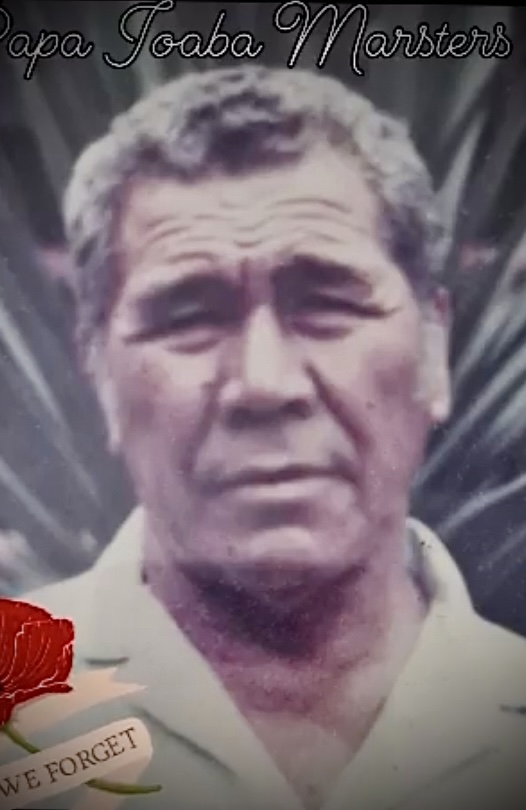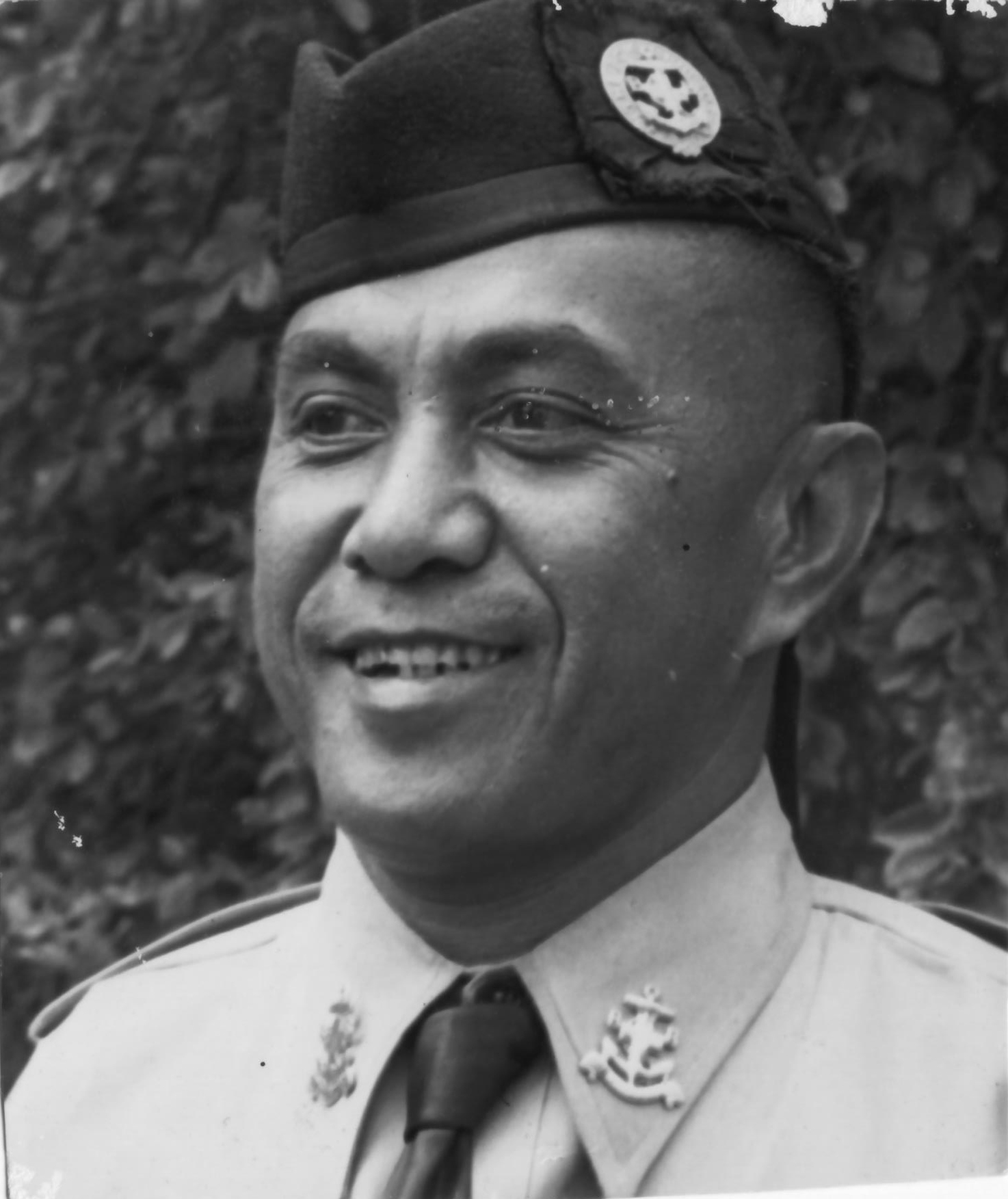Descendants of Cook Islands coastwatchers share pride in their ancestors’ service
Monday 9 October 2023 | Written by Melina Etches | Published in Local, National

Sir Tangaroa Tangaroa, pictured using a radio, has been identified as a World War II coastwatcher by the New Zealand Defence Force. SUPPLIED/23100633
Families of Cook Islands coastwatchers are pleased with New Zealand’s efforts to formally recognise the significant service their ancestors provided during the Second World War.
During the Second World War, military personnel and civilians in Aotearoa New Zealand and other Pacific Islands, including the Cook Islands, operated a network of stations keeping watch around the clock for enemy aircraft and ships. They were the coastwatchers.
There were 58 stations set up in the coastwatching system around the South Pacific and included people posted around the Cook Islands, Samoa, Kiribati, Tonga, Fiji, Tokelau and Tuvalu.
In October 2022, the New Zealand Government announced measures to formally recognise the significant service of Pacific Island coastwatchers.
Last month, the New Zealand Defence Force released a list of names of Pacific men who were posted to stations for coastwatching.
Seven plaques are being made for Cook Islands coastwatchers: Rubena Rotati (more likely to be Robati), Toka Temu, Puri Teariki, Tai-o-Tonga Henry, Tutu Ringaio QSM, Teatamira Uangakore and Tai Nicholas.
Other coastwatchers from the Cook Islands were Pamatatau, Ioaba Marsters, Rua Nia Rua, Jasper Tariu and Sir Tangaroa Tangaroa MBE. The have been identified but authorities have not been able to make contact with their respective families, reported the New Zealand Herald.

Ioaba Marsters has been identified as a World War II coastwatcher by the New Zealand Defence Force. TUTU INAMATA/23100803
Last week, Cook Islands News made contact with Tutu Inamata, a great grandson of Ioaba Marsters, and Eileen Takiika Tairi, a feeding daughter of the Sir Tangaroa Tangaroa, for comments on New Zealand’s efforts to formally recognise the significant service of Pacific Islands coastwatchers.
“Discovering my great grandfather’s important role as a ‘Coastwatcher’ in the war is deeply moving,” said Inamata.
“When I was young, he would share stories about his wartime experiences, but I didn’t fully grasp their significance back then.
“Now, as I look back, I realise how vital his work was during that time.
“The recognition and dedication for him and other courageous Cook Islands men who did such a crucial task coastwatching is truly inspiring.
“Their sacrifices and commitment to the broader war effort deserve to be celebrated and remembered.”
Inamata expressed that the recognition of these men is “momentous” for their family and the Cook Islands community.
“It’s a testament to the strength, resilience, and unwavering commitment of these remarkable men, and serves as a reminder of the deep-seated courage and selflessness that runs in our family’s history, and it’s a legacy that I will always carry with immense pride.”

Sir Tangaroa pictured after the war on Rarotonga has been identified as a World War II coastwatcher by the New Zealand Defence Force. SUPPLIED/23100634
Eileen Takiika Tairi said she was pleased to see that the Cook Islands and Pacific coastwatchers are and will be formally recognised.
Sir Tangaroa Tangaroa was married to Tairi’s mother.
“He was a good man to all of us growing up, it is good this is being done,” Tairi said.
Other Cook Islands names that have been discovered are: Tutere Tupero, M. Tata, T. Tiro, T. Nena, Reginald G. Savage, E. Browne, N. Niarua, Enua Eteke, Tera Maurangi, Teruarau Teariki, Tanu Raina, Maka Pharaoh, Taramai Tuakana, Keu Vaea, Ngaputa Turua, Papehia Rere Wichman, Tutai Pirangi and Terii Toru.
The list is incomplete, but it is the most comprehensive list of Pacific coastwatchers that the New Zealand Defence Force has been able to compile so far.
A historical report prepared by defence historian John Crawford looked at the roles played by those Cook Islanders and other Pacific Island civilians in the coastwatching organisation outside of New Zealand.
The report indicated that approximately 50 to 60 civilian coastwatchers – including one Pākehā New Zealander – in the Cook Islands and another 50 civilians elsewhere in the Pacific did not receive any formal recognition of their service.
The formal recognition of Pacific coastwatchers started with Cook Islander Tua’ipulotu Willie Cuthers’ search to find out more about his grandfather William Kiri Cuthers.
Tua’ipulotu Willie Cuthers research and discovery has led to the official recognition of up to 100 Pacific Islanders who served as coastwatchers throughout the Pacific region during World War II.
In 1942, William Kiri Cuthers was a 16-year-old boy from Arorangi, Rarotonga, who was put on the remote island of Mitiaro to carry out coastwatching work. The first official service plaque was installed on his grave on Rarotonga by his family which reads: “William Cuthers. NZ Coastwatcher 1939-45. Died 9.9.1989. Aged 64 years.”
Last month, the first unveiling of a plaque in New Zealand for a Cook Islands coastwatcher, radio operator Pu Banaba, took place in O’Neill’s Point Cemetery, Auckland.
Banaba’s plaque was placed on the grave of his father, Sergeant Beni Banaba, who served during World War I in the Rarotonga Company of the Māori Contingent, New Zealand Expeditionary Force (NZEF).
Anyone with information about a Pacific coastwatcher or families wanting to make contact with the research team can email: historyenquiries@nzdf.mil.nz
- Additional reporting by NZDF














































